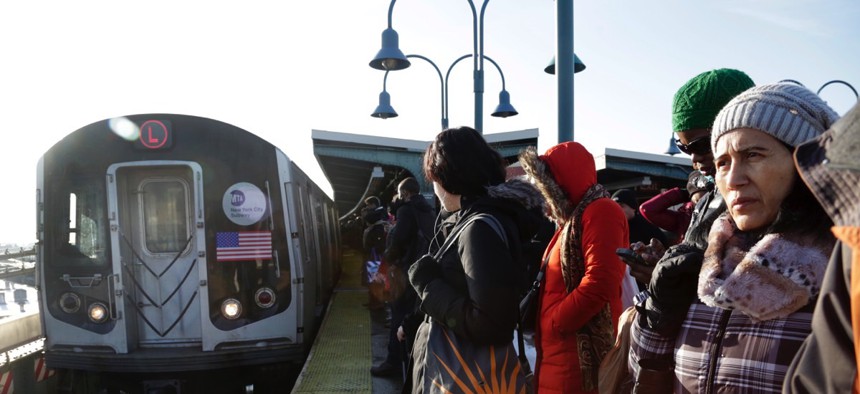Can A Clever Video Make People Care About a Stalled Infrastructure Project?

Commuters wait as an L train arrives at the Broadway Junction subway station in Brooklyn. Mark Lennihan / AP Photo

Connecting state and local government leaders
Using video as a weapon in the fight against decaying rail tunnels and bureaucratic red tape.
East Coast cities are no stranger to public transportation-fueled angst.
SafeTrack—the year-long system-wide maintenance improvement initiative currently underway for the D.C. Metrorail system—is less than three months down and already facing delays. Moving north, the City of Brotherly Love isn’t feeling so amorous about chaotic delays caused by major defects in 120 cars of Southeastern Pennsylvania Transportation Authority’s relatively new commuter rail fleet.
And New York City—which is facing an 18-month shutdown of subway tunnels connecting Manhattan and Brooklyn along the heavily traveled L line—faces yet another looming “Transportation Armageddon.”
Amtrak’s Hudson River twin rail tunnels that run between Manhattan and New Jersey were built more than 100 years ago and carry 95,000 Amtrak and New Jersey Transit commuters every day. But those tunnels were badly damaged during Hurricane Sandy. According to Amtrak, the tunnels will need to be closed for repairs, one at a time, for over a year each.
If that sounds bad to you, it’s because it is. The closures will dramatically decrease capacity in and out of Penn Station, North America’s busiest rail hub.
There’s some good news—a proposal is in the works for a high-speed rail corridor called the Gateway Project which would allow for some operational flexibility for these closures and nearly double commuter capacity. But there’s also bad news. The project—one that is expected to generate jobs and business activity while reducing traffic and carbon emissions—is tied up due to a stalled permitting process.
Unfortunately, inefficiencies in the New York City permitting process is a relatively nebulous problem, and a tricky one to draw people’s attention to, especially if the goal is to drum up change-making public outrage.
Now, Common Good, a nonpartisan reform coalition, is betting that a short, funny, informative video produced by a former writer for “The Daily Show” can do the trick better than a wonky white paper. Only time will tell if the video, created by Alex Marino, can raise enough vocal support for the Gateway Project to cut through the red tape.
Check it out for yourself:
Quinn Libson writes for Government Executive’s Route Fifty.

NEXT STORY: IARPA looks to reinvent the virtual desktop





